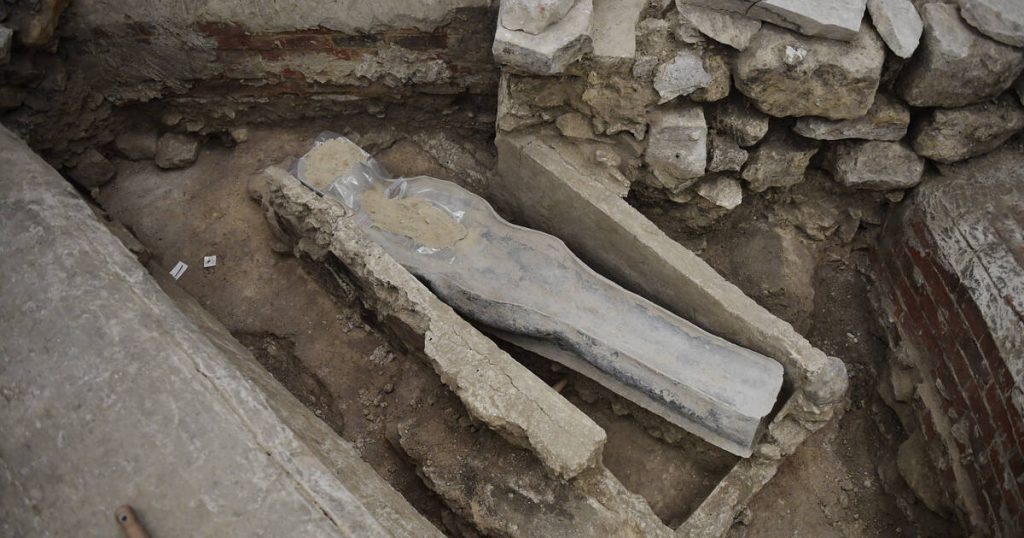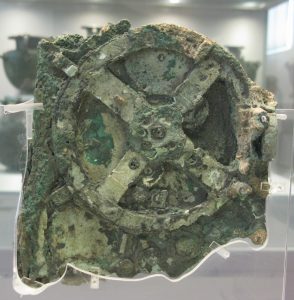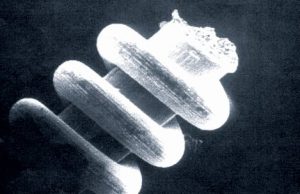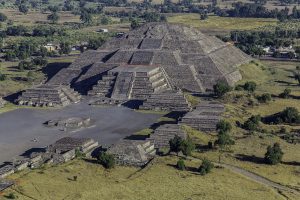
The picture shows a 14th century lead sarcophagus discovered in the floor of Notre Dame Cathedral, in Paris, on March 15, 2022. (Photo by JULIEN DE ROSA / AFP)
Paris (France) About three years after the great fire in the Notre-Dame de Paris cathedral, archaeologists who were given unexpected access to the underground of the church building damaged by the fire, report the discovery of an very unusual find. They discovered a lead coffin in the shape of a human body. It hasn’t been fully opened yet, however the first endoscopic images from the inside show that the sarcophagus contains a skeleton as well as other objects.
As the French “Institut national de recherches archéologiques préventives” (Inrap) reports, the archaeologists discovered the mysterious anthropomorphic coffin at a depth of around 20 meters together with plaster coffins severely damaged by smoke gases. The exact age of the human-shaped lead sarcophagus is still unknown, but the depth of the find indicates that it could be from the Middle Ages. While lead coffins are not unusual in themselves and archbishops were usually buried in them at Notre-Dame, the anthropomorphic form of the ancillary sarcophagus found in the western part of the cathedral is unusual.
Despite a few holes, the sarcophagus is in good condition. It measures 1.95 m in length and is 48 cm wide. “An endoscopic camera enabled evidence of plant remains beneath the deceased’s head (perhaps a pillow of foliage), hair, textiles, and dry organic matter.
The fact that the sarcophagus was found under a mound of earth in which archaeologists had discovered pieces of furniture from the 14th century indicates, that the sarcophagus is even older. “If this is confirmed and the sarcophagus is from the Middle Ages, then we would be dealing with a really extremely rare form of burial practice,” said lead archaeologist Christophe Besnier. A C-14 dating should bring clarity about the exact age.
This will soon be possible, as the sarcophagus which is currently in the Forensic Institute in Toulous, is due to be opened and examined.







Perhaps a very high ranking church official?